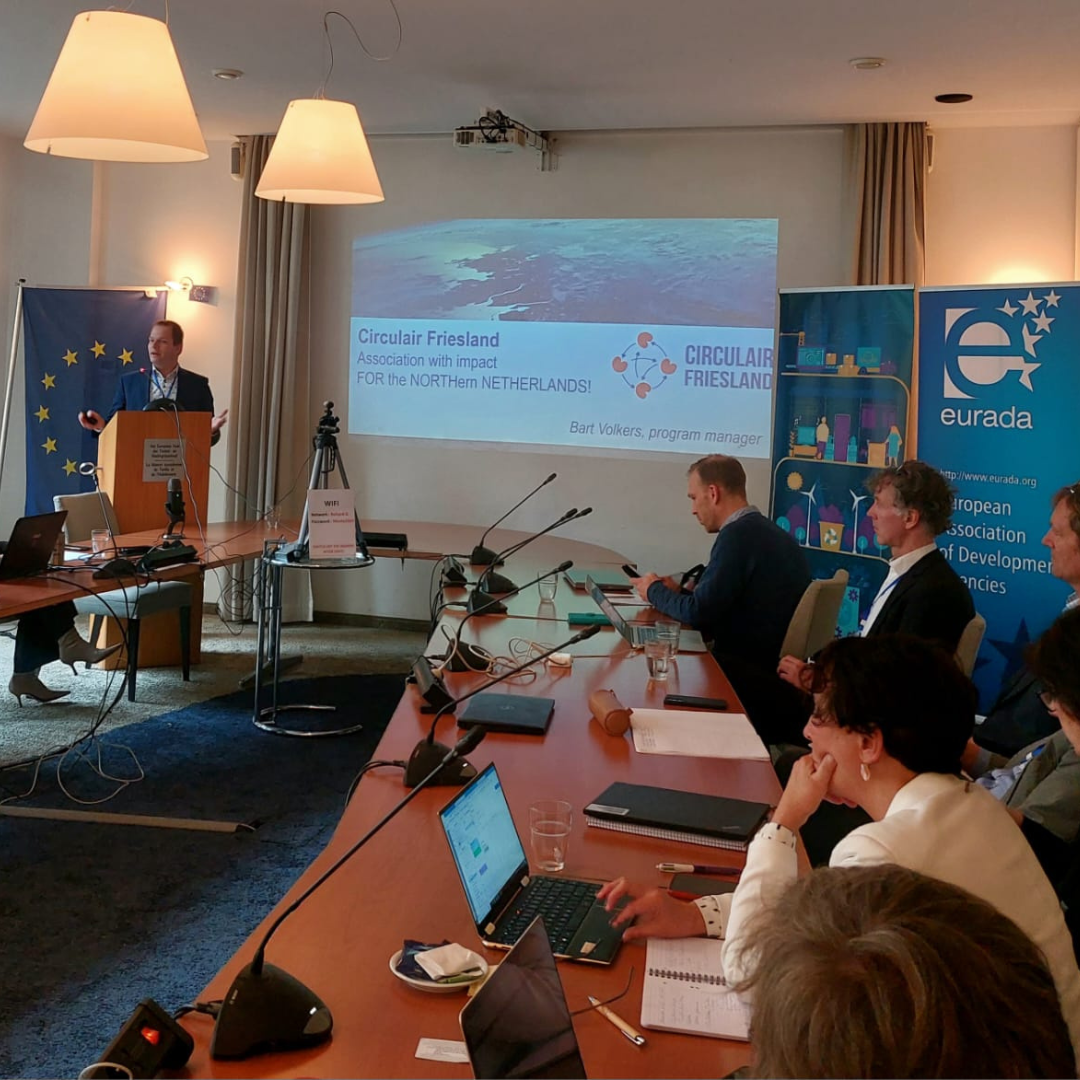The event kicked off with a short introduction by Luca Polidori, Secretary General of Veltha, on the background of the event and with several representatives of the European Commission explaining the origins and rationale of the European Commission's circular economy initiatives (launched in earnest in 2018), European innovation ecosystems, support to industry and SMEs, the European Digital Innovation Hubs and the Circular Cities and Regions Initiative. All of which have implications for initiatives to support companies, especially SMEs, in the transition to the circular economy and/or digitalisation. Ultimately, all three concepts aim to support businesses and other actors at regional and local level with advice on the circular economy and digitalisation.
The first concept discussed was the Hubs for Circularity, including their newly launched Community of Practice. The Hubs for Circularity are managed as part of the Processes4Planet programme – a European public-private partnership established by A.SPIRE and the European Commission, and have been taken up by the latter as a key instrument to further the research and innovation agenda of European industry. As a result, the Hubs for Circularity focuses on process industries, their impact on climate, the circular use of resources, and their transition in a global competitive landscape. The Community of Practice, on the other hand, specifically targets the practical implementation of circular economy goals through industrial scale investments and implementations.
In contrast, it quickly became clear that the concept of Circular Hubs is much more diverse. The biggest common denominator could be that they are bottom-up initiatives and approaches that emerge in regions that unite or support stakeholders in their circular transition. Hence, while the Hubs for Circularity implement the circular transition themselves, Circular Hubs act as facilitators. The European Circular Economy Stakeholder Platform aims to capture these different initiatives of which a number presented themselves during the event: Holland Circular Hotspot, Versnellingshuis Nederland Circulair!, Circular Slovakia, Circulair Friesland and Vlaanderen Circulair. The range of activities of these hubs is broad, and while they focus on supporting SMEs in their respective regions, they also have a global dimension, as became clear during the presentation of the Holland Circular Hotspot.
The last session of the morning linked the two circular concepts with the European Digital Innovation Hubs (EDIHs) by discussing ways and approaches to digitise the circular economy. The EDIHs aim to support European SMEs in their digitisation efforts, especially in non-focal regions, and completed the trio of support hubs addressed at the event. Digital transformation is widely seen as a prerequisite for the green transition and the circular economy. As with the Circular Hubs, the (European) Digital Innovation Hubs are very diverse in their activities.
The final part of the event consisted of a round table discussion on the relationships between the three concepts, and whether and how these different Hubs should cooperate. In short, it became clear that the different Hubs are responses to regional needs that are very different from each other. Therefore, a monopolisation of the hubs working towards the circular economy must be avoided. Especially since most of the companies targeted by the support measures first need to adapt and implement circular practices before thinking about becoming circular. A lively discussion arose on the possibilities and needs for cooperation between Hubs for Circularity, Circular Hubs and Digital Innovation Hubs, in particular on the question of whether regional ‘Memoranda of Understanding’ should be signed defining the different competences and services provided by the Hubs in a given region in order to avoid confusion among the target groups of the support measures – most notably SMEs. However, the social and creative dimension as well as the involvement of citizens in the circular process are clearly neglected in the current design of the Hubs and need to be taken more into account in the future.
The topic will remain high on the agenda, not least because the European Commission will soon introduce another hub concept – the Circular Business Hubs. While the event was very successful, it also created more understanding and confusion at the same time. Looking forward, it will be of utmost importance to reduce the latter, especially for SMEs operating at regional and local level, in order to support them in the transition to the circular economy and digitalisation.
